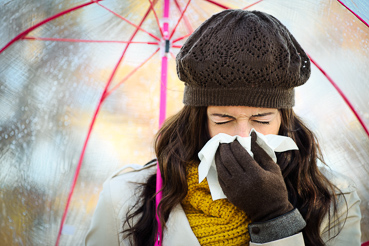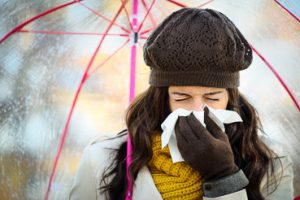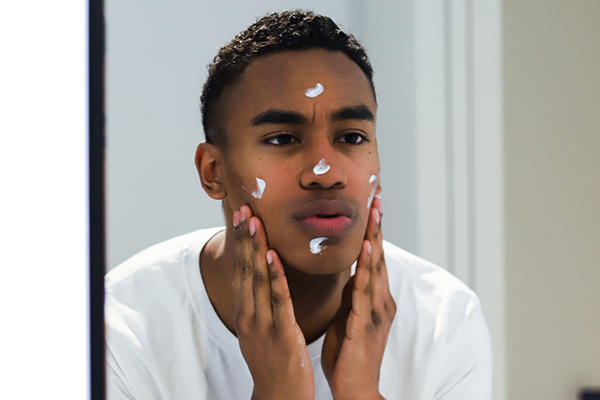Love Your Heart This Valentine’s Season
 Put Your Heart First This Valentine’s Season
Put Your Heart First This Valentine’s Season
What’s on your Valentine’s Day list this year? A dozen red roses? A box of gourmet chocolates? A romantic getaway or tickets to the big game? These excellent choices may cause hearts to flitter—a great reminder that with all the love going around, our hearts need love, too!
As one in four deaths are caused by heart disease, American Heart Month in February is a great time for some uplifting activities that our hearts can fall in love with.
Ask your heart to dance
It’s not always easy to exercise in winter, so why not get creative? Bust a move and clean your house to music. Try your hand at an indoor climbing wall. Play laser tag with the kids. Go ice skating, or try yoga, Pilates or water aerobics. As you dance about, remember that signs of heart attack vary for men and women; if you don’t feel quite right, be sure to seek care.
Take your heart to dinner
Love with every “fiber” of your being—by keeping fiber and whole grains in your meals! High-fiber diets have been shown to lower blood pressure and encourage a healthy weight. (While we’re on the topic of fiber, February is a great time to schedule your colonoscopy!)
Find a partner your heart can trust
Every heart has a story to tell. When it comes to choosing health care providers, let your heart in on the decision. PacMed’s team features some of the longest-serving doctors in the region, who invest in doing right by patients over the long haul.
If you’re looking for someone new, drop in for a visit—including our state-of-the art Nuclear Cardiology department at our First Hill clinic, led by Dr. Philip Massey and assisted by Dr. Keiko Aikawa.
In Remembrance of Dr. Oren Traub

It is with great sadness that we announce the passing of our great friend and valued hospitalist colleague, Dr. Oren Traub.
Dr. Traub was an accomplished physician, scientist, and writer. He earned a PhD in the field of pathology, biochemistry, and molecular biology and an MD from the University of Washington Medical School, where he was inducted into the AOA Honor Society and recognized with the James W. Haviland Award for Clinical Excellence and Leadership in Medicine. He was the recipient of several national research fellowships, Young Investigator awards, and national awards for Excellence in Research. Dr. Traub completed his residency in Internal Medicine at the University of Washington and is board-certified by the American Board of Internal Medicine.
Dr. Traub joined Pacific Medical Centers in 2004 immediately after completing his residency. He was an integral part of the Pac Med Hospitalist Team, where his professionalism was only surpassed by his vast intelligence and gentle kindness. He was a shining star who was committed to his patients and supportive of his coworkers and always could be counted upon to give his best. He would routinely stay after to assist on busy days, volunteer to cover coworkers’ requests for time off, and continue to care for patients even on his time off, often reviewing records in order to assist in improving patient care. When not providing clinical services to hospitalized patients, Dr. Traub also dedicated his professional time to medical writing, editing, and consulting.
Dr. Traub was not only an outstanding physician, but a wonderful person, and a valued friend whose joie de vivre was apparent during any interaction with him. Dr. Traub’s personal interests included travel, fantastic foods, writing, technology, live performance and politics. Dr. Traub enjoyed life and chose the best unabashedly – in his travels he enjoyed the finest of lodgings, foods, and events and shared that love with his friends
Dr. Traub is survived by his husband Mark, his parents, Tamar and Amos, and his sister, Donna. He will be sorely missed by his PacMed family and our hearts and prayers go out to his family and friends and the patients that loved him.
A memorial service for Dr. Traub will be held on Friday, April 19, 2019 from 6-8 PM at Swedish Medical Center, Cherry Hill in the Education & Conference Center, Rooms A&B.
Nuclear cardiology: Why it’s important for your heart health

Nuclear cardiology is an accurate, noninvasive way to test for heart disease. It’s most commonly a stress test that measures the heart’s blood flow and pumping function. Advances in technology ensure only a small amount of radiation exposure.
More than 500,000 people die each year from heart disease, making it the leading cause of death in the United States. Also known as coronary artery disease, this narrowing of the heart’s blood vessels with fatty plaque deposits in the arterial walls blocks blood flow. This causes symptoms such as chest discomfort, angina, shortness of breath, and, potentially, a heart attack. That’s why it’s vital to get a proper diagnosis of heart disease, and one of the best ways to do that is with nuclear cardiology.
It may sound like something from science fiction. But nuclear cardiology is a common, noninvasive test that detects problems with myocardial blood flow as well as the heart’s pumping function, says Joy (Juwono) Sutedjo, MD, a cardiologist at Pacific Medical Centers in Seattle, Washington.
“Basically, it’s a type of stress or rest-and-stress test,” says Dr. Sutedjo, who is board-certified in nuclear cardiology and other cardiovascular imaging techniques. “The stress can be achieved by exercise, such as walking on a treadmill. If the patient is unable to exercise maximally, such as is often the case with an older patient or someone who has problems with the hips or knees, the stress is safely created with medication.”
When a patient comes in for a nuclear cardiology test, a small amount of imaging agent is introduced into the bloodstream. Then the patient is scanned with a gamma camera, which can detect the imaging agent. If there is a significant blockage or narrowing of the coronary artery, the heart muscles may not get enough blood during the exercise or chemical stress test. This decrease in blood flow can be detected by the camera images.
The nuclear component is part of the imaging agent, Dr. Sutedjo says. “We use a radio isotope, which is a radioactive material, in a very small amount,” she says. “With the advances in nuclear cardiology, we have been able to minimize the amount of radiation a patient receives. It is similar to a CAT scan of the chest.”
Nuclear cardiology has been around for several decades, and the past few years have seen developments that not only minimize radiation exposure but also help physicians study how the heart muscle pumps blood. This is called a MUGA test. Dr. Sutedjo says it can also be used with cancer patients while they are on chemotherapy or radiation therapy to ensure their heart is safe during treatment.
There are other types of stress tests, but nuclear cardiology is especially recommended for patients with moderate to high risk of heart disease. That’s because nuclear cardiology is one of the most sensitive, advanced tests available, Dr. Sutedjo says. Patients with lower risk may do a treadmill test that skips the nuclear component, at their physician’s discretion.
“Nuclear cardiology is a very good test to diagnose heart disease without doing an angiogram, which is an invasive procedure with risks,” she says. “Heart disease can be a silent killer, where a patient doesn’t have symptoms but has significant heart disease. Nuclear cardiology is recommended for patients with risk factors such as age, diabetes, hypertension, smoking, high cholesterol and family history of heart disease or stroke, or patients with abnormal EKG results. Nuclear cardiology can be a very valuable tool because it is noninvasive and has great accuracy in diagnosing heart disease and determining the extent of it.”
Nuclear stress tests can be ordered by a primary care provider or other non-cardiologist physician for patients who have the risk factors for heart disease. Learn more about the Nuclear Cardiology Department at Pacific Medical Centers.
A sniffle, a sneeze
PacMed doctor explains the differences between the common cold and flu virus
It’s that time of year once again — sniffles and sneezes galore, cherry-tipped noses running at a constant pace, stomach bugs the culprit behind bedroom confinement and misery. As people navigate the trenches of winter illnesses, getting a proper diagnosis is imperative for adequate healing. Here, Pacific Medical Center’s Dr. Dimple Sahay explains the distinction between the flu virus and the common cold, and offers wisdom for recovery that will leave even the most agonized victims with pep in their step.
This time of year, various illnesses are running rampant. Can you inform readers on how to differentiate between colds and the flu?
Both colds and flus are caused by viruses. While there are hundreds of viruses that can cause colds, the flu is mainly caused by influenza A and influenza B. Symptoms can overlap for both, but colds are generally milder than flus and don’t lead to serious complications. The flu is sudden in onset and has several associated symptoms including fever, chills, extreme fatigue and body aches. Colds have a gradual onset and involve upper respiratory symptoms including runny nose, nasal congestion, sore throat and sneezing — but typically no high fever, chills or extreme fatigue.
What symptoms should people be on the lookout for that may indicate the flu virus has been caught?
Flu symptoms include sudden onset of fever, chills, body aches, headaches and fatigue. People with the flu can also experience a loss of appetite, sore throat, runny nose and a cough. In some cases, people may develop gastrointestinal (GI) symptoms such as vomiting or diarrhea. It’s important to note the flu can lead to serious complications like pneumonia, bacterial infections and hospitalizations, especially in high-risk populations such as the elderly, immunocompromised, pregnant women and children under the age of 2.
What precautions can people take to avoid or lessen the severity of the flu and colds this season?
The Centers for Disease Control (CDC) recommends an annual flu vaccine for everyone 6 months and older. People should also take certain general precautions like frequent hand washing, covering your mouth and nose while coughing, sneezing with tissues and disposing it properly and cleaning your hands with alcohol rub afterward. It’s also important to wipe down surfaces such as doorknobs, toys and computers to prevent spreading germs. If flu symptoms develop, it’s recommended to stay away from work, school or other public places until you are fever-free without using fever-reducing medications for at least 24 hours. Antiviral drugs should be taken within 48 hours of an onset of symptoms to help decrease the severity and duration of symptoms.
Time is of the essence for military members and their hectic lifestyle. Do you have any tips for initiating a speedy recovery from seasonal ailments?
Once flu symptoms are recognized, I recommend to patients to rest and stay hydrated. When sick with the flu, people should stay away from work and school until their symptoms of fever and chills resolve. Residual symptoms of weakness, fatigue and respiratory symptoms may take up to one to two weeks to disappear. I also recommend taking over-the-counter fever-reducing agents for fever and discomfort. As I previously mentioned, taking antiviral medications within 48 hours of an onset of symptoms can also be key in decreasing the severity of symptoms, especially for those in a high-risk population.
How to help clear up your teen’s acne outbreak
 Teenage acne is caused by a combination of factors: oily skin, genetics, stress, bacteria, and hormones.
Teenage acne is caused by a combination of factors: oily skin, genetics, stress, bacteria, and hormones.
A proper skin care regime, along with over-the-counter and prescription medications, can clear up acne affected skin and prevent future breakouts.
Acne treatments may take 6-8 weeks to be effective.
Has your child recently started to suffer anxiety because of adolescent acne blemishes? You’re probably not the only one who has noticed. For teenagers, there’s perhaps nothing more socially awkward — or a more major blow to the self-esteem — than an enormous pimple in the middle of their forehead.
What causes teen acne?
When a child enters adolescence, rising hormone levels stimulate an increase in oil production of the sebaceous glands on the head, neck, chest and back.
About 8 in 10 tweens and teens have acne; several factors influence its development:
- Oily skin
- Genetics
- Stress
- Bacteria
- Hormones
What is an appropriate skin care routine for a typical teenager?
My advice is to wash the face once or twice daily with a lathering soap to remove bacteria, dead skin cells, and excess oil.
Keep hair clean by shampooing daily. Greasy hair contacting the face or neck can increase acne.
And don’t excessively touch the face. Constant poking and prodding may occlude (plug up) follicles more easily, leading to more pimples.
What over-the-counter products do you recommend?
First, discuss with your teen how important it is to stick with a skin care treatment for at least 6-8 weeks to see if it is effective. Often, kids don’t use acne products long enough to see if they are actually working. Acne will not clear up overnight; it takes time.
For daily face washing, a simple soap like Dove for Sensitive Skin, or Cetaphil Foaming Face Wash, are good choices if the skin dries out easily.
For oily skin, or if the acne is considerable, try an over-the-counter (OTC) acne cleanser containing salicylic acid or benzoyl peroxide. Caution: benzoyl peroxide may bleach dark towels and clothing, and about 4% of users become allergic to it. If a rash develops, discontinue use and contact your doctor.
If a teenager has more than just a few pimples, try Differin Gel (adapalene). This is an over-the-counter retinoid, similar to the prescription product Retin-A. After washing and drying the face, apply a pea-sized amount, once daily.
To help or prevent dryness, use a light, non-comedogenic (won’t plug pores) moisturizer like Cetaphil or Cerave Lotion, once daily.
If acne has not improved after using Differin Gel for 6 weeks, add to the routine a topical gel or lotion that contains 5-10% benzoyl peroxide or 2% salicylic acid.
After acne clears, continue using products to prevent new breakouts.
What help can a dermatologist offer?
If a teenager tries the above recommended OTC products and is not improving after a trial of at least 2 months; usually has a dozen or more active pimples at the same time; or is developing deep, hard, cystic or nodular acne lesions (which can lead to scarring), it may be time to visit a dermatologist or family doctor.
Prescription treatments may include topical medications and oral antibiotics, which treat related bacteria, as well as offering anti-inflammatory benefits.
With proper and early treatment, it is usually possible to get acne under control and prevent scarring.
A dermatologist can also help mediate some of the acne-related tension that can occur between parents and teens and remind the teen that maintaining good habits for clear skin, and proper use of acne-fighting products, is their responsibility.
What do you advise teens know about picking or popping their pimples?
If you do decide to pop a pimple, only pop one that has a white head.
Only attempt to pop it once. Picking at or popping a pimple more than once will create a deeper scab and increase the possibility of scarring.
First, wash the area (and your hands) with soap and water. Then, use a pin or needle — cleaned with alcohol — to gently prick the surface of the pimple. Remove contents by pushing two cotton swabs together, rather than using fingernails.
Never attempt to squeeze a deep pimple, as you might cause additional inflammation and longer healing time.
What are some common misconceptions about acne and its treatment?
Diet. There are no scientific studies that prove a relationship between diet and acne. However, some research has suggested that a high glycemic diet, or consuming a lot of highly processed foods, may have some correlation with acne flares. If a teen drinks a lot of milk, organic milk is recommended since it does not have any added, artificial hormones. In general, for healthy skin, eat a sensible, well-balanced diet.
Birth control pills. There is some misunderstanding about how helpful birth control pills may be for teenage girls with acne. The higher estrogen pills may help for mild cases, but these also have additional side effects. If a patient needs to go on birth control for medical purposes other than acne control, ask about those which may be more favorable to clearing acne.
Accutane. Patients with serious acne may benefit from treatment with this medication. The generic form is called isotretinoin; the brand name is no longer made. One controversy about this drug is that it has been claimed to cause teen depression. However, the association has not been scientifically proven. Moreover, effective acne treatment improves mood and self-esteem. Ask your child’s dermatologist if this medication is an option, and be sure to tell the dermatologist and other providers about any new depressive symptoms in your child if he or she is taking isotretinoin. The American Academy of Dermatology recommends in detail this medication for treatment of severe acne and moderate acne that resists treatment or is producing scars or psychosocial distress.
Subscribe to To Your Health and browse more of our best skin care articles.
Resolutions with social solutions
 Don’t Try This Alone
Don’t Try This Alone
Teamwork can boost New Year’s Resolutions
January is over, and those resolutions are fading. It’s amazing how quickly our resolve dissolves. The problem, according to two PacMed physical therapists (PTs)—who have decades of experience walking people back from devastating setbacks—could be trying to change all on your own.
When PacMed’s Aysha Morgan, PT, DPT, first met Sandy, she’d “had a very severe stroke a few years ago and was only being pushed around in a wheelchair…. She felt the only thing she could do was move one arm. She couldn’t stand, she couldn’t transfer, she definitely couldn’t walk.”
“I took one look at her, and I thought, ‘No, no, no—there’s potential in this woman!’” says Aysha. “Let’s see what kind of potential you have that’s going to make your life easier.” Over the course of the year, Aysha worked with Sandy, helping her stand, then take a step, then two steps and finally walk with a cane.
When our beliefs keep us from changing, it helps to connect with someone else who sees our potential—like Aysha did for Sandy. Stephanie Clements, PT, who manages PacMed’s team of 15 physical therapists, encourages the team to see potential by keeping the whole person in mind. “Once you find out more about them, then they start to tell you more about what they’re capable of doing, or what their dream is to do. You’re more than your diagnosis,” she says.
Stephanie sees the best outcomes among people who make social connections part of their health routine: “The ones that do very well are the ones that go to the community center three times a week. So they’ve got a group…. It’s socializing. They are in the same boat; they are all wanting the same thing.”
The right environment can foster long-term investments in each other that make change possible. As Aysha says about Sandy, “It’s taken her a year to come this far, and I’m grateful that PacMed has allowed me to work with them for this time.” The kind of environment that fosters caring for patients starts with caring for each other. As Aysha describes,
“I love my coworkers—I love the people who work under me, over me, beside me. Patients are just so wonderful. Honestly—I’m so, so pleased, I couldn’t be more pleased. And I’ve always loved my job, always done the best wherever I can, but I’m especially happy here, which is so nice. Really.”
That kind of supportive environment empowers caregivers to invest in others through the sometimes-long process of change. Aysha reflects on her ongoing work with Sandy, who suffered the stroke. “In the beginning, we worked on just standing, just standing, which was hard,” says Aysha. “And then we got her standing and moving from one place to the next. And standing and taking a step, and then taking two steps, and taking steps on a walker with a platform, and then a front-wheel walker. And just recently, we got her walking indoors with a cane.”
This investment, in turn, can inspire patients to invest in themselves. Sandy, accompanied by her husband, a Korean War and Vietnam vet, has “come in, diligently, every single week. Really, to be honest, it’s her hard work, and his hard work. They’re incredible people,” says Aysha.
Stephanie witnessed this transformation firsthand. “Sandy was glowing. And her husband was so happy.”
Primary care saves lives
 How primary care can save your life
How primary care can save your life
“Before the headaches started, he wasn’t himself on the basketball court,” Michelle Tibbs, mother of 16-year-old Dorian, recently told us. “He started playing kind of sloppy.… He was lobbing the ball and had a lot of turnovers.” That night, Dorian was shivering in bed and throwing up.
The emergency room diagnosed him with a sinus infection and sent him home. At urgent care the next day, Michelle told the doctor, “I’ve had sinus infections, I didn’t throw up from them, this is not normal.” Still, the doctor just increased his sinus medications and also sent him home.
Luckily, the Tibbs family had a primary care doctor who had cared for Dorian since birth. “When I walked into the room, I could tell Dorian was extremely sick,” said Dr. Mary Weiss, according to an article in the Seattle Medium. “The difference in what I have with Dorian is I knew him.”
Michelle told us that the family saw their primary care doctor on a Monday afternoon. At 6:00 the next morning, Dorian underwent his first brain surgery. It turns out he was suffering from an infected abscess that was leaking into his brain.
Michelle would meet others on Facebook with the same condition as her son. One slipped into a coma and had 70% of his brain removed, resulting in permanent mental impairment. Another, a 13-year- old, was also turned away with a misdiagnosis eight times and died shortly thereafter.
“‘If you would have been one more day, Michelle, we would have been having a whole different conversation,’” she reports Dr. Weiss told her.
Dorian spent eight days in the Intensive Care Unit, eventually undergoing a total of five brain surgeries.
Today, Dorian is playing basketball again, point guard for Garfield High School’s varsity squad, and he’s on track to attend a Division I college. It’s been a long road back, but it all started with a doctor who knew Dorian’s personality and history, and used that background to find the right diagnosis.
In the US, primary care doctor-patient relationships are on the decline.
According to a 2018 study by the Health Care Cost Institute, primary care office visits dropped by a full 18% in the short period from 2012 to 2016. While a shifting health care market may introduce convenient options like urgent care and direct access to specialists, as the Tibbs family knows, these can’t take the place of a doctor who knows you.
That’s what new PacMed patient Sara had in mind when she visited for the first time this fall. “I’ve had cancer before, and while I’m healthy now,” she says, “I want someone who can follow me in case anything comes up again.”
As a lifelong artist who had just landed a teaching job, Sara also decided to upgrade her health care. PacMed’s connection to the Swedish hospital system was key to her decision: “It’s a good way to get good health care while having access to a top hospital.”
Sara’s first visit to PacMed’s Beacon Hill campus to meet her new doctor didn’t require her to sacrifice any convenience. “Everyone’s been so nice,” she adds. “They were able to schedule me for my labs and scans here on the same day—it’s kind of amazing.”
Sara is on her way to building relationships with doctors who know her and who, as PacMed’s Dr. Andrew Dym puts it, practice medicine in “a deep and persistent culture, with our roots as a Public Health Service hospital.” Whether you’re starting in middle age or have known a doctor from birth, we encourage you to invest in a relationship with a doctor who can get to know you over time.
Michelle Tibbs recommends it: “100 percent—110 percent, yes.”
PacMed’s network of 150+ physicians around Puget Sound includes 72 primary care doctors, with 30 who have been in practice with us over 10 years. Our commitment to establishing long-term doctor-patient relationships hearkens back to the days when family doctors and house calls were the norm.
Five Tips to Lessen the Symptoms of Seasonal Affective Disorder

The dark and gloomy winter days affect us all differently, and it can sometimes bring on feelings of depression. The phenomenon is known as Seasonal Affective Disorder (SAD), and though some in sunnier states might shrug it off, we in the Pacific Northwest know it all too well.
To better learn what steps we can take to combat SAD, we spoke with Rene Czerwinski, a licensed mental health counselor at Pacific Medical Center in Totem Lake.
Q: How many people does Seasonal Affective Disorder impact in the Northwest?
A: While I don’t have the exact data for the Northwest, research shows as many as 10 percent of people in the U.S. suffer from Seasonal Affective Disorder (SAD). It is up to four times more common in women than men, and the common age of onset is between 18 and 30. SAD is affected by the amount of light to which we are exposed, so those in colder northern climates may be at a higher risk.
Q. When do symptoms of Seasonal Affective Disorder typically start and end?
A: Symptoms can be different for everyone. If you notice during the “fall back” daylight saving time change it is taking you longer to adjust to a new schedule, especially with your sleep, this may be a sign of SAD. Typically, it should not take longer than two weeks to adjust. Symptoms can start to lessen in severity as the sun comes out more and the days get longer, usually in the Northwest this would be late Spring. The grayer the days are, the longer some symptoms can last.
Q. Is it something people should ask their doctor about?
A: Yes, absolutely. Talk to your care provider and share what symptoms you are experiencing. If you are prone to depression or have a family history of depression, you may be more susceptible to SAD. If you are on anti-depressants, share your symptoms regularly and your primary care provider or psychiatrist can make adjustments if needed.
Q. What are five ways to help yourself cope with Seasonal Affective Disorder?
A: Sleep is a very important way to lessen symptoms. This means keeping on your normal sleep schedule, even as it gets darker earlier and our mind sometimes tells us it’s later than it actually is. Good sleep hygiene includes getting up at the same time every day, following a bedtime routine to program your body to sleep, keeping the temperature in your room at 68 degrees, and keeping your room dark at night. I also recommend avoiding TV, computer and phone use for at least 30 minutes before bed.
Light therapy has shown promise in many studies. There are a variety of “happy lights” that are purchasable at various price points to help combat the darker days. Some also used alarm clocks that slowly lighten up the room (mimicking the rising sun) as it gets closer to the time the alarm will go off, helping provide a natural waking. Another option for those not interested in light therapy, is getting outside for 5 to 10 minutes when the sun is out, even if it’s cold outside. Whether you take a quick, brisk walk around the outside of the office building or go for a walk at lunchtime, the natural rays can help.
Exercise is helpful for all types of depression, as it increases the production of endorphins in the body, which are neurotransmitters that make you feel good. Try to get 30 minutes of exercise three to five days per week. This can be light exercise, such as walking, or more vigorous activities like running.
Vitamins have been proven in some studies to help with SAD. Vitamin D and B help bridge the gap to making one feel better, helping to increase energy and promote happier moods. However, consult with your care provider before taking any new vitamins.
Lastly, aromatherapy and essential oils also can help. It is scientifically proven that certain scents affect our brains and bodies in different ways. Lavender is often associated with sleep and calmness. Eucalyptus, grapefruit, cinnamon, peppermint, and cedarwood have qualities to increase energy and wakefulness. Aromatherapy diffusers can be used in an office, home, and even cars. If using essential oils, consult with professionals and your care provider, as some individuals can experience allergies.
What you need to know about the new AAP car seat safety guidelines
 The American Academy of Pediatrics (AAP) recently released revised car seat safety guidelines, removing previously recommended age limits.
The American Academy of Pediatrics (AAP) recently released revised car seat safety guidelines, removing previously recommended age limits.
Kids are safest in the rear-facing position, until they outgrow the weight and height restrictions of their individual car seats.
There’s nothing as sweet as a sleeping young child who is safely secured into his or her cozy car seat. As a parent or parent-to-be, you probably researched car seat reviews for hours to find the perfect model; after all, this car seat was likely the first major health and safety-related purchase for your child.
You should know that the American Academy of Pediatrics (AAP) recently changed their safety guidelines for child car seats. Read on to make sure you have the most up-to-date information, so that you can continue to keep your child safe and secure
What is new?
“The biggest change is removal of the age limit. Until a few months ago, pediatricians were encouraging kids to sit rear-facing at least through the age of two,” explains Alexander Hamling, MD, a pediatrician at Pacific Medical Centers in Seattle, WA. “Now, the focus is on their weight and their height.”
The AAP now recommends that you keep your child in the rear-facing position until he or she reaches the upper weight and height limits of the individual car seat. Because those numbers can vary car seat to car seat, you need to be familiar with them for your car seat model.
Dr. Hamling explains why the rear-facing position is the safest for young children: “If you imagine that you’re traveling in your car, driving 60 mph, and you come to a sudden stop from an accident, your body is still trying to go 60 mph. Your seatbelt is preventing most of your torso from going that speed, but your head is still trying to go 60 mph. This is where you may sustain whiplash, neck injuries, nerve injuries, muscle injuries.”
“It’s the same thing with children who would be riding in the rear of your car,” he continues. “They don’t have the necessary muscle strength to safely stop their head from moving as quickly; or, they may be asleep in the car seat and not realize an accident just occurred. When they’re rear-facing, their head is already being pressed against the back of the seat, so the force continues into that same, cushioned area. They don’t have the same risk for whiplash or overextension of their neck.”
Recent research involving child restraint effectiveness show that car seats reduce the risk of injury by 71% to 82%, and reduce the risk of death by 28% when compared with children of similar ages using adult seat belts.
Car seat safety tips:
- Always use a child safety seat for your child when riding in a motor vehicle.
- Use your child’s weight and height, not his age, to determine an appropriate car seat.
- Be familiar with the upper weight and height restrictions for your child’s individual car seat.
- Keep the child in a rear facing position as long as possible, based on his height and weight.
- Make sure the car seat is properly installed. Most car seats have multiple methods for installation; determine the one best suited for your car. It shouldn’t be able to move more than an inch in any direction.
- Be sure the straps aren’t too high, too loose, or too snug on the child. You should be able to place one finger between the strap and your child.
- Practice installing and using your car seat. You don’t want the first use to be when you’re leaving the hospital with a newborn. (Use a teddy bear for practice!)
- Bring your car seat to the airport when you travel by plane. Even if you decide not to use it while on board (i.e. for a lap infant), car seats can be checked free of charge and will be waiting for you when you arrive for use in your taxi, Uber, or car rental.
Car seat laws: Washington
Looking for a pediatrician? Find one near you in our online directory, or visit:
Help your loved one cope with loss during the holidays
 The holiday season often inspires feelings of warmth, joy, and belonging. However, for some people, this time of year is overwhelmingly marked with loneliness, sadness and anxiety — particularly after the loss of a loved one during the year. The holidays are for being with those we love the most and coping with the first holiday season (or many) after the loss of a relative or friend can be incredibly challenging.
The holiday season often inspires feelings of warmth, joy, and belonging. However, for some people, this time of year is overwhelmingly marked with loneliness, sadness and anxiety — particularly after the loss of a loved one during the year. The holidays are for being with those we love the most and coping with the first holiday season (or many) after the loss of a relative or friend can be incredibly challenging.
Although grief is universal, it expresses itself in many different ways. Friends and family members of those affected by loss are often unsure of what to say or how to act to support their loved ones who may be struggling.
Here are a few ways you can provide meaningful support and honor those in your life who may be grieving this holiday season:
Be present. You know your loved ones and you can sense when something is bothering them. Without pestering, it’s important to let them know that you are available to listen. When they are ready to talk, respect their vulnerability and turn off your phone, the TV and any distractions to let them know you are there to listen and support them. Being present can also mean simply being with your loved one. Sit next to them and be accessible in the area without being suffocating.
Grieve together. While you may feel like you need to be strong to be there for others who are struggling to cope, it’s also important to be vulnerable and honest and allow yourself the time to grieve as well. By sharing this experience, your loved one will know that they are not alone in this process and will feel less isolated during this challenging time.
Re-evaluate your holiday traditions. One reason that the holidays can intensify feelings of sadness or depression is because cherished activities trigger happy memories and can become a source of pain. If your loved one retreats from participating in the traditional holiday festivities, respectfully give them their space and let them know you’re there when they’re ready to talk.
Find new traditions to honor their memory. While the topic of loss can be difficult to discuss, it’s important to acknowledge the special memories of our loved ones and keep their legacy alive through new traditions at the holidays. If all feel comfortable, share stories and your favorite memories of that person so the younger generations of your family can learn more about them. Consider getting a special ornament in their honor that can be shared with all family members to keep their memory alive each year. Or, if they had a favorite dish they brought to each holiday gathering, carry on that tradition by bringing the same dish to future family gatherings as a nod to their memory. Remember that the new normal and traditions are not bad, just different, and may take time.
And, as always, if the grieving process ever becomes too cumbersome or starts to interfere with daily life, don’t hesitate to reach out to a mental health professional to see what support or counseling options may be available to ease the burden of grief.













